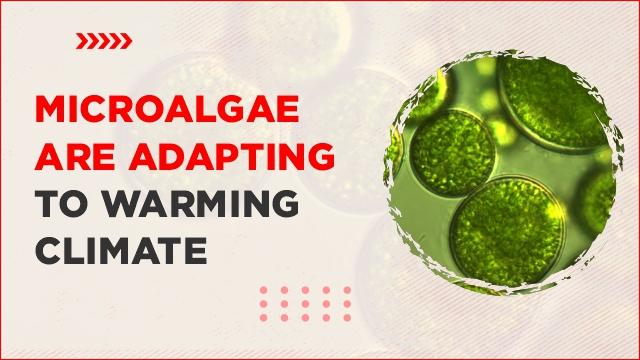Short Article
17:52:04
Microalgae are adapting to warming climate
Microalgae have adopted a unique strategy to adapt to global warming.
Key Highlights:
- Microalgae are microscopic algae that are invisible to the naked eye.They are typically found in freshwater and marine systems.
- They are unicellular species that exist individually or in chains or groups.
- Unlike higher plants, microalgae do not have roots, stems, or leaves.
- Microalgae are capable of performing photosynthesis. They produce approximately half of the atmospheric oxygen and captures the carbon dioxide from the atmosphere.
- They play a crucial role in the food chain as they serve as a primary source of nutrition for a wide range of aquatic organisms. They are often consumed by various aquatic creatures, including zooplankton, which, in turn, are eaten by larger organisms like fish.
- Some species of microalgae, such as spirulina and chlorella, are highly nutritious and are used as dietary supplements. They are rich in proteins, vitamins, minerals, and other essential nutrients.
- Microalgae can be used to produce biofuels, such as biodiesel. They have a high lipid content, which can be converted into fuel through various processes.
- Microalgae can help in wastewater treatment and carbon capture. They can absorb nutrients and pollutants from water and help improve water quality.
- Microalgae are used in biotechnology for the production of various compounds, including pigments, pharmaceuticals, and chemicals.
- As climate change reduces nutrient availability in the ocean, microalgae activates a protein called rhodopsin. This protein is related to the one responsible for low-light vision in the human eye.
- Rhodopsin enables these microalgae to thrive by using sunlight instead of traditional chlorophyll when nutrients are scarce. Rhodopsins are proposed to be major light capturers in the ocean. They absorb light as much as chlorophyll-based photosynthesis in the sea to generate energy and food.




